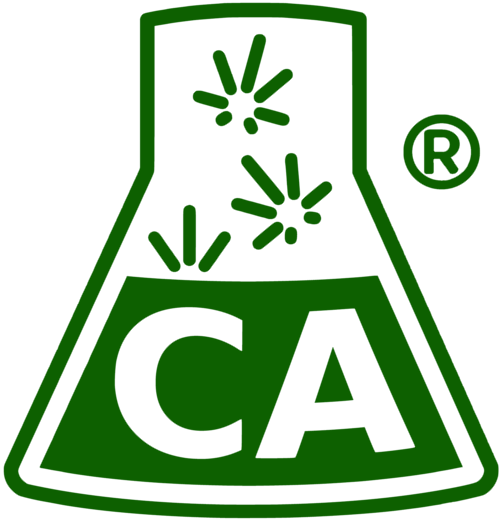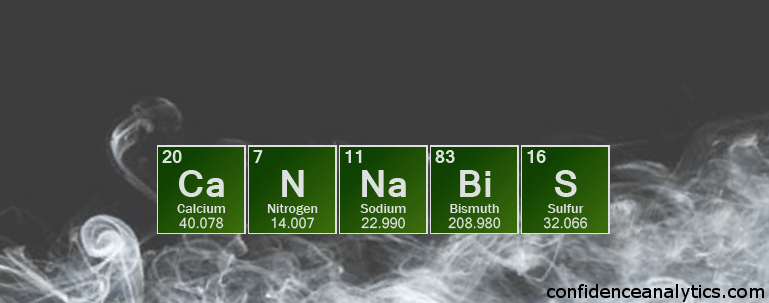Like millions of Americans, some of the folks here at Confidence Analytics are big fans of the show Breaking Bad. With knock-out performances by Bryan Cranston and Aaron Paul, and an extremely intense script guided by showrunner Vince Gilligan, the series delivers exciting drama with highly-relatable characters, offering a chance to reflect on the war on drugs and the far reaching effects it has on the lives of even the unwitting. As chemists ourselves, we appreciate the show’s mostly true-to-reality approach when it comes to the chemistry involved in the storyline (they actually hired chemists to work as consultants on the show1), as well as the fun chemistry trivia that is peppered throughout the series including some rather clever trick questions. There’s only a little bit of hand-waving that goes on regarding exactly how Mr. White is able to achieve enantiospecificity without using a stereospecific ingredient like ephedrine. I guess that part’s just left up to our imagination.
Despite how fun the show was to follow, we are genuinely relieved to be marijuana scientists and not methamphetamine scientists. At no point will our career choices lead to driving a rigged RV down a desert highway while making a farewell tape for our loved ones that is expressly “not an admission of guilt to any law enforcement entities.” Set aside the legal implications — the violence, the home wrecking, the risk to life and freedom — at the end of the day, meth just isn’t as interesting of a drug as marijuana is.
The real difference between marijuana and methamphetamine — from a production perspective — is that meth is synthesized using petroleum products, strong acids, and catalytic metals, whereas marijuana products are derived from a naturally occurring botanical commodity. Fundamentally, methamphetamine only has one active ingredient, everything else is an impurity. In contrast, marijuana has many active ingredients which behave synergistically and antagonistically to produce a pharmacological phenomenon known as the “entourage effect”2. That’s why, especially in the last two seasons of Breaking Bad, the high-end meth traffickers are always chasing higher purity, because purity is the only thing that can improve the subjective quality of a meth cook. It’s also why, in marijuana manufacturing, chasing a higher THC concentration is often not the best way to achieve an improved product. Marijuana is not that simple.
To the savvy consumer, assessment of a botanical product’s quality characteristics requires taking a holistic approach; it means recognizing that the essence of the product stems from the interactions of the many intimately interconnected parts and constituents that comprise it, and that no single constituent sufficiently describes the spirit of the substance. This is especially true for cannabis flower and cannabis extracts, and it is also true for many commodities that we interact with daily.
Consider your morning coffee, where the primary active ingredient is caffeine, and yet it contains other active ingredients that can boost your energy and metabolism including niacin (a B vitamin)3, theophylline (a bronchodilator), and theobromine (a heart stimulant)4, to the point where even decaffeinated coffee still has stimulating effects (and even decaf has some residual caffeine). While caffeine in its pure form is readily available at most drug stores, consumers tend to prefer their caffeine intake as a holistic botanical hot-water extract, with over 70% of caffeine intake in the United States coming from brewed coffee5. The caffeine content of coffee is also highly variable (ranging from ~95 to 200 mg per 8 oz cup), even when obtained from the same source6, and yet, most coffee drinkers seem both unaware of this fact and unconcerned by it, tending to judge their coffee based on its roast, its brew, its aroma and taste, and the source of the beans — not the concentration of caffeine.
While we chose caffeine in coffee for this example, the same story can be told of alcohol in spirits, nicotine in tobacco, and acetic acid in vinegar, to name a few. The quality of these products is not judged based on the concentrations of their most active ingredients but rather by the synergy of all the parts that make their whole.
The same notion applies to cannabis. While THC might be the main psychoactive constituent of cannabis — like caffeine is to coffee — its content alone does not dictate the quality of the cannabis product. The true quality of cannabis arises from a variety of factors but is primarily hinged upon cannabinoid and terpene contents. No single measurement by the lab tells the whole story about cannabis quality.
Why, then, are consumers (and by extension manufacturers) so obsessed with THC concentration? It ultimately boils down to a lack of consumer education. As a new industry rises, the education level of the average consumer tends to rise proportionally. In the case of cannabis, consumer education is playing catch up. Undoing decades of misinformation and black market hearsay is going to take time. The simple paradigm of purity-driven price that is highlighted in Breaking Bad through the glorification of a chemist whose purity of product is nowhere else matched makes sense in that context, and it’s easy to make the assumption that marijuana products are similarly valued. The truth is: the Cannabis plant produces a more complex drug than Heisenberg does, and understanding its complexity takes a sophistication that is not in common with the illegal amphetamine trade.
Be sure to ask your friendly budtender at the marijuana retail store what he or she thinks is the best strain, brand, or product type and why, but don’t take their answer as gospel. Remember that only you can decide what marijuana product is best for you (unless you have a specific recommendation from your doctor). Take the time to think critically about what it is you like about some marijuana products, what you don’t like, and why. Revel in the diversity that cannabis provides and consider yourself fortunate to have so many choices.
Confidence Analytics offers formal budtender training courses in an effort to help the industry personnel interacting most with consumers guide quality assessments at the retail shelf. Furthermore, we are planning a series of blog posts that will focus on the entourage effect and judging cannabis quality, so please check back here. We hope this kind of education-based work will lay the foundation so that consumers learn to view cannabis in a holistic light rather than making the mistake of thinking it’s a one-compound drug.
References:
1) Kemsley, Jyllian. “‘Breaking Bad'” CEN RSS. Chemistry and Engineering News, 3 Mar. 2008. Web. 16 Sept. 2016.
2) Russo, B. Ethan. Taming THC: potential cannabis synergy and phytocannabinoid-terpenoid entourage effects. British Journal of Pharmacology. Web. 2011, 163, 1344–1364. 16 Sept. 2016.
3) Various. “Nicotinic Acid.” NCBI. U.S. National Library of Medicine, n.d. Web. 16 Sept. 2016.
4) R, Franco. “Health Benefits of Methylxanthines in Cacao and Chocolate.” National Center for Biotechnology Information. U.S. National Library of Medicine, 18 Oct. 2013. Web. 16 Sept. 2016.
5) Frary CD, Johnson RK, Wang MQ. Food sources and intakes of caffeine in the diets of persons in the United States. J Am Diet Assoc 2005;105:110–3.
6) McCusker RR, Fuehrlein B, Goldberger BA, Gold MS, Cone EJ. Caffeine content of decaffeinated coffee. J Anal Toxicol 2006;30:611–3.

